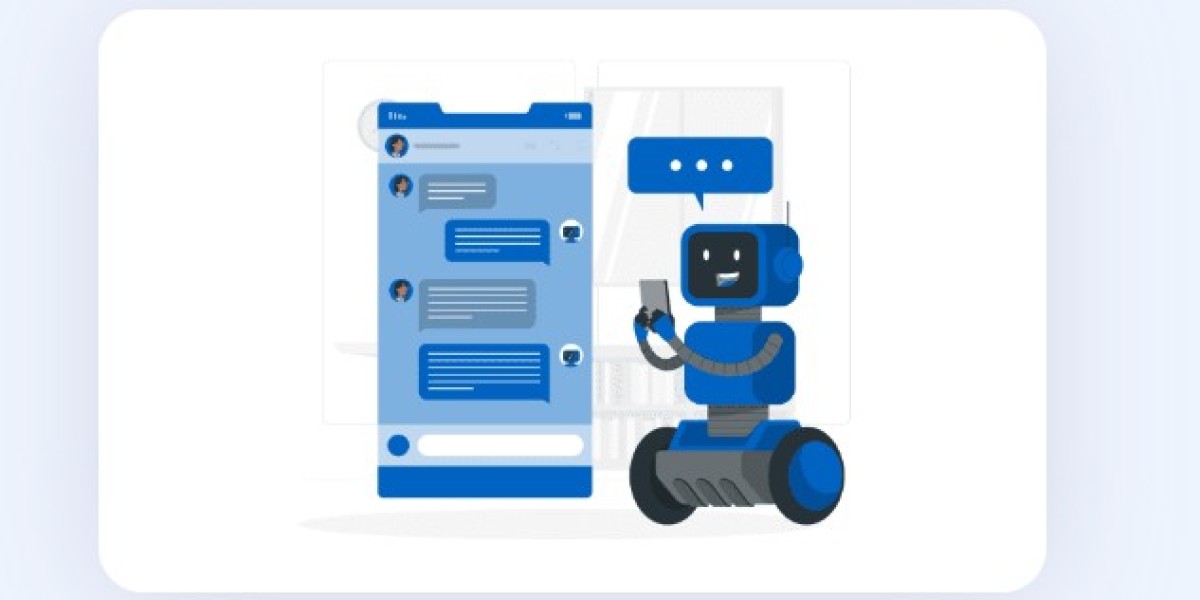The healthcare sector is increasingly turning to digital technologies to improve patient care, streamline administrative tasks, and enhance the overall patient experience. One of the most promising innovations in this area is the rise of healthcare chatbots. These AI-powered systems are transforming the way healthcare providers interact with patients, offering solutions that not only reduce wait times but also significantly improve operational efficiency. This article explores the role of healthcare chatbots in enhancing patient experiences and optimizing healthcare services, particularly focusing on their impact on reducing wait times and increasing efficiency.
What Are Healthcare Chatbots?
Healthcare chatbots are AI-powered virtual assistants designed to interact with patients, provide information, and help with various healthcare tasks through natural language processing (NLP) and machine learning. These bots can be accessed via websites, mobile apps, or messaging platforms, providing immediate responses to patient inquiries and facilitating a variety of processes such as appointment scheduling, symptom checking, and patient education.
The primary advantage of healthcare chatbots is their ability to automate tasks that traditionally require human intervention, such as answering frequently asked questions, handling appointment bookings, and even providing initial diagnostic guidance based on symptoms. By automating these functions, chatbots free up valuable time for healthcare staff, enabling them to focus on more complex and critical tasks.
Reducing Wait Times with Healthcare Chatbots
One of the most significant challenges in healthcare today is long wait times. Patients often experience delays when trying to schedule appointments, getting test results, or even receiving answers to basic queries. These delays can lead to frustration, dissatisfaction, and, in some cases, more severe consequences for patients who may require urgent care. Healthcare chatbots are playing a pivotal role in addressing this issue.
1. Immediate Access to Information
Healthcare chatbots are available 24/7, providing patients with immediate access to information and answers to their questions. Whether a patient needs to understand their symptoms, find out about treatment options, or inquire about office hours, a chatbot can provide quick and accurate responses without having to wait for a human representative. This not only saves time for the patient but also reduces the workload on healthcare staff, allowing them to focus on more specialized tasks.
2. Streamlined Appointment Scheduling
In many healthcare systems, scheduling appointments can be a time-consuming process. Patients often need to call the office, wait for an available time slot, and sometimes deal with long phone queues. Healthcare chatbots simplify this process by allowing patients to book appointments directly through the chatbot interface. Bots can access the doctor’s schedule, check availability, and confirm appointments in real time. This eliminates the need for phone calls and reduces wait times for both patients and administrative staff.
3. Pre-screening and Triage
Healthcare chatbots can also assist with triage, helping to assess the severity of a patient's condition before they even see a healthcare provider. By asking a series of diagnostic questions, the chatbot can quickly determine whether a patient’s symptoms are indicative of a serious issue, or if they require routine care. This helps prioritize cases, directing patients with urgent needs to the appropriate department while allowing those with less severe issues to wait or be redirected to lower-level care. This pre-screening reduces bottlenecks in emergency departments and general practice offices, minimizing wait times for those in need of more immediate attention.
Increasing Efficiency Through Automation
Another key benefit of healthcare chatbots is their ability to enhance operational efficiency in healthcare settings. By automating a variety of administrative and clinical tasks, chatbots help healthcare providers save time, reduce human error, and improve overall productivity. Here are several ways chatbots are improving efficiency in healthcare environments:
1. Automating Administrative Tasks
Healthcare institutions spend a significant amount of time on administrative tasks, including data entry, appointment scheduling, and answering patient inquiries. Chatbots can automate many of these processes, allowing healthcare providers to allocate their resources more efficiently. For example, chatbots can handle routine inquiries about office hours, insurance details, and the status of prescriptions, thereby reducing the workload of receptionists and office staff.
By automating routine tasks, chatbots can also reduce the risk of human error. For example, a chatbot can accurately input patient details into the system, schedule appointments based on available time slots, and even send automated reminders to patients, reducing the chances of missed appointments.
2. Improved Data Collection and Management
Data collection is an integral part of the healthcare process. Accurate and timely data ensures that patients receive the best possible care and that healthcare providers can make informed decisions. Chatbots play a crucial role in data collection by automatically gathering and recording patient information. When patients interact with the chatbot, they may be asked to provide details such as their symptoms, medical history, and other relevant information.
This data can be instantly entered into the healthcare provider’s system, eliminating the need for manual data entry. Additionally, chatbots can continuously monitor and update patient records, ensuring that healthcare providers have access to up-to-date information. This level of automation streamlines workflows and ensures that patient data is handled efficiently and accurately.
3. Facilitating Virtual Consultations
With the growing demand for telemedicine, healthcare chatbots are making virtual consultations more accessible and efficient. Before a virtual consultation with a healthcare provider, a chatbot can gather essential information about the patient’s symptoms, medical history, and concerns. This information can then be passed on to the healthcare professional, enabling them to be better prepared for the consultation.
Chatbots can also assist in triaging patients, determining whether a virtual consultation is appropriate or whether the patient should be directed to an in-person visit or urgent care facility. This ensures that healthcare professionals' time is used effectively, allowing them to focus on the most critical cases while providing virtual consultations for those whose needs can be addressed remotely.
4. Managing Patient Education
Healthcare chatbots are also becoming an essential tool for educating patients about their conditions, treatment options, and preventive measures. Traditional methods of patient education often require in-person visits, handouts, or phone calls, which can be time-consuming. Chatbots, on the other hand, can provide patients with customized educational content through simple text interactions.
For example, a chatbot can educate a patient on how to manage a chronic condition, explain the side effects of prescribed medications, or offer advice on lifestyle changes that could improve their health. This type of automated patient education can help reduce unnecessary follow-ups, as patients are more likely to have their questions answered in real time.
The Role of Healthcare Chatbot Development
The development of healthcare chatbots involves several technological and design considerations to ensure their effectiveness. For a chatbot to be truly useful in a healthcare environment, it must be built with the following factors in mind:
- Accuracy of Information: Chatbots must be programmed with reliable medical information to provide patients with accurate advice and support.
- Compliance with Regulations: Given the sensitive nature of healthcare data, chatbots must adhere to strict regulatory standards such as HIPAA (Health Insurance Portability and Accountability Act) in the U.S. to ensure that patient privacy is maintained.
- User-Friendly Design: To maximize adoption and engagement, healthcare chatbots should be easy to use and accessible to people of all ages, including those who may not be tech-savvy.
- Integration with Healthcare Systems: Chatbots need to be integrated with existing healthcare systems, such as Electronic Health Records (EHR), to ensure a seamless flow of information between patients and providers.
Healthcare chatbot development is a rapidly growing field, with many healthcare providers investing in these technologies to enhance their services. Developers are continuously working to improve chatbot capabilities, integrating advanced AI algorithms and expanding the scope of tasks that chatbots can perform.
Conclusion
Healthcare chatbots are revolutionizing the healthcare industry by reducing wait times and increasing operational efficiency. By providing immediate access to information, automating administrative tasks, assisting with triage, and facilitating virtual consultations, chatbots help streamline processes and reduce the burden on healthcare staff. As healthcare chatbot development continues to evolve, these tools will play an even more significant role in improving the quality of care and enhancing patient experiences.
As healthcare providers increasingly adopt AI-driven solutions, the potential for chatbots to further reduce wait times and enhance efficiency is limitless. The future of healthcare is undoubtedly digital, and chatbots will continue to be at the forefront of this transformation, providing a more efficient, accessible, and patient-centric healthcare experience.
Naijamatta is a social networking site,
download Naijamatta from Google play store or visit www.naijamatta.com to register. You can post, comment, do voice and video call, join and open group, go live etc. Join Naijamatta family, the Green app.
Click To Download


